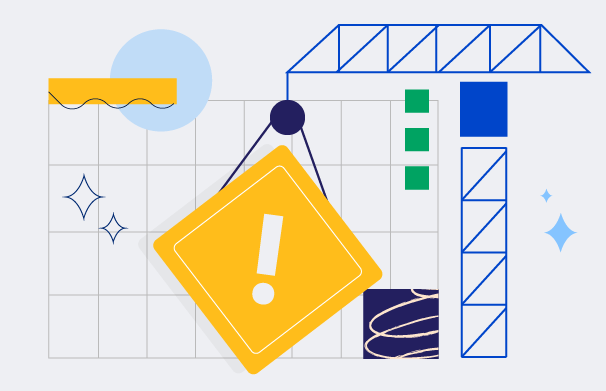Our society is undergoing numerous technological changes. In just a couple of decades, it will be quite different from what it is today. One significant factor that impacts and transforms various aspects of everyday life is the rapid expansion of the artificial intelligence and robotics industry.
Scientists, industry experts and ordinary people all express various viewpoints about the potential outcomes of the active AI and robotics development. And if some believe that smart technologies have inexhaustible power and vast benefits, others are scared of the possible “rise of the machines” and the destruction of the human race.
IoT devices and Embedded systems. Consulting, Developmet and Testing – start your product development journey with us today
Let’s take a look at the influence of robotics and artificial intelligence on our lives from various perspectives.
1. AI and Robotics Impact on the Workplace
Robots can work day and night. They don’t need breaks, vacations, or medical insurance. They don’t have conflicts with their bosses or colleagues and take no personal time to deal with their problems.
Employers would be happy to have a staff consisting solely of smart machines, while employees have many fears regarding the robotics-based workforce and its impact on employment.
As with any revolutionary technology, there are two sides to the coin in implementing the robotics-integrated workforce.
Negative Impact: Many Jobs Will Be Eliminated
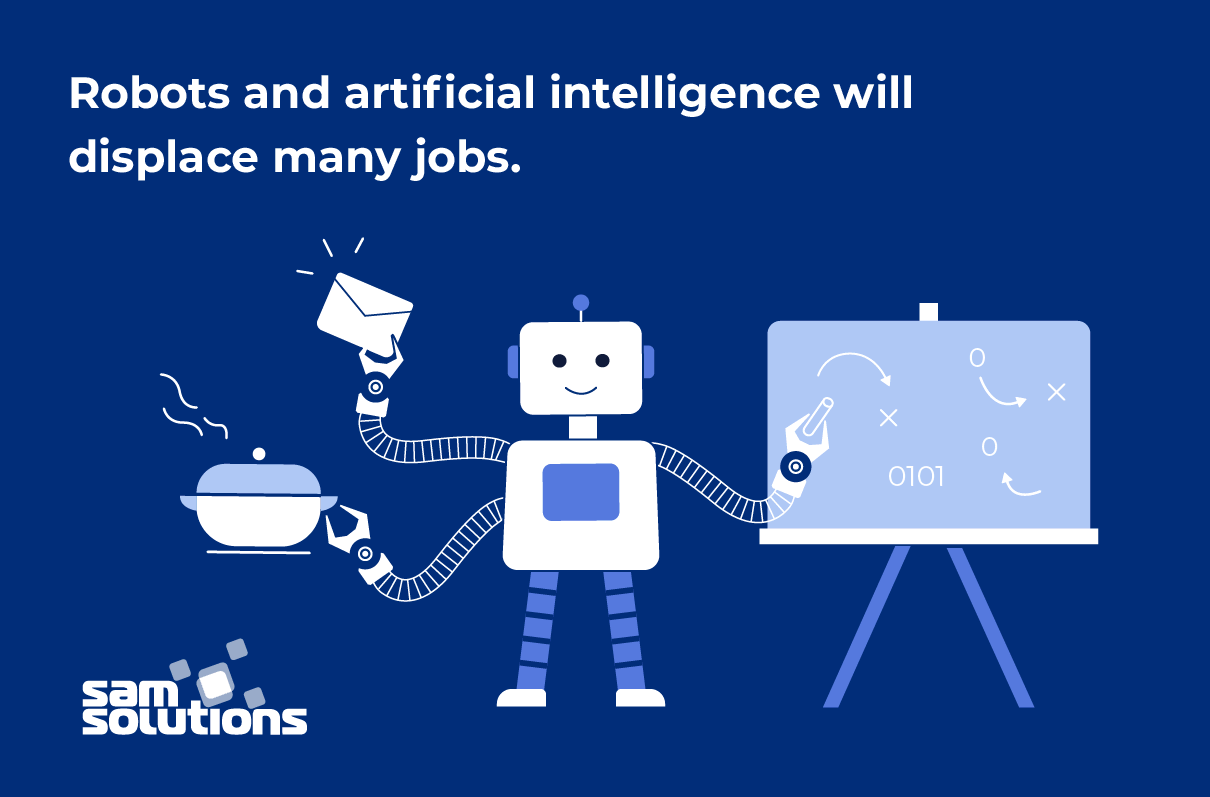
The main fear of employees is the elimination of numerous jobs and, consequently, unemployment. And this fear is not without reason. Business owners and manufacturers benefit from the implementation of machine learning algorithms and various kinds of robots primarily for the sake of increased productivity. That’s why they are eager to introduce new technologies, often to the detriment of employees.
A McKinsey Global Institute study found that by 2030, between 400 million and 800 million employees around the world could be displaced by automation.
Such a seismic shift can be compared to the Industrial Revolution when society shifted from agriculture to manufacturing.
It’s developed countries, which have the finances and the necessary infrastructure for digital transformation, that will see a significant impact of automation on their labor market. Developing economies with less money to invest in robotization will not be affected as much.
Kinds of jobs most likely to go to AI robots
Robots can effectively perform jobs that require repetitive tasks, such as working on the assembly line, software testing, creating financial reports and compiling other documents based on data. Moreover, they easily replace humans in performing hard manual tasks or working in hazardous conditions, such as in the chemical industry or mining.
AI systems can supplement employees such as accountants, financial experts, or doctors in performing cognitive tasks. Thus, in medicine and healthcare, artificial intelligence can greatly assist in branches such as diagnostics, drug formulation, or clinical trials. Nevertheless, medical workers will mostly keep their jobs, taking into account ethics issues and communicative skills that the machines lack.
The jobs where robots will have the least impact have to do with people management, social interactions and creativity, such as education or natural science. As a rule, these jobs are difficult to automate, but even if it were possible, it would be costly to implement, which is not attractive from the business point of view. These also include specialized jobs in unpredictable conditions, e.g. plumbers and electricians.
Positive Impact: New Kinds of Jobs Will Appear
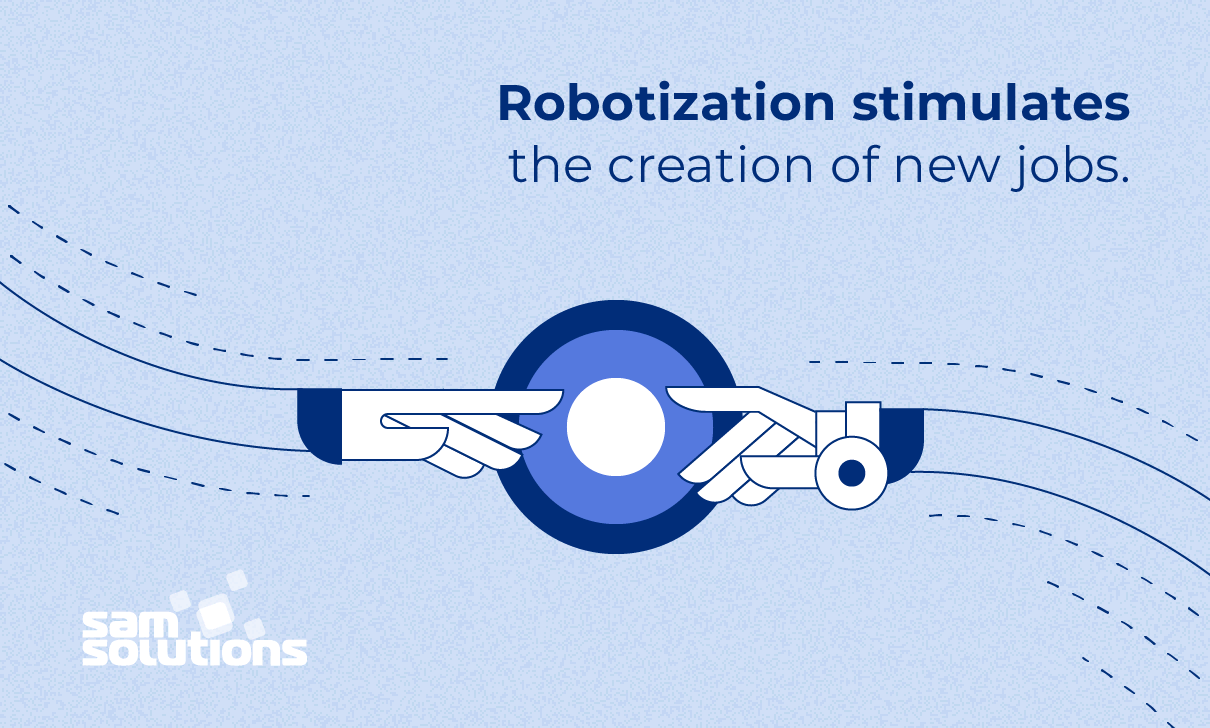
Artificial intelligence and robotics, like other new technologies, are not totally destructive for employment.
The main goal of emerging technologies is not to replace humans in their jobs, but to make all processes safer and more efficient. It’s not a confrontation, but rather a beneficial collaboration between automated robotics and humans.
Employment in the automated industries may not decline but rather increase, as new types of jobs will appear and new skills will be required. It’s true because machines can’t work by themselves. Humans are needed to develop software for machines, maintain and fix equipment, or make decisions based on data generated by intelligent technologies.
History has already seen such a workforce shift in the 1980s with the introduction of the personal computer. It was expected to endanger employment, but in reality, it has led to the creation of the IT industry and online businesses, resulting in an enormous number of new jobs such as software engineers.
According to the McKinsey report, almost half of the tasks performed by people globally could theoretically be automated using modern technologies. Nevertheless, only 5 percent of all jobs can be fully automated. In the remaining jobs with partial automation, only one-third of activities can be performed purely by machines, while other tasks will still require human participation or supervision.
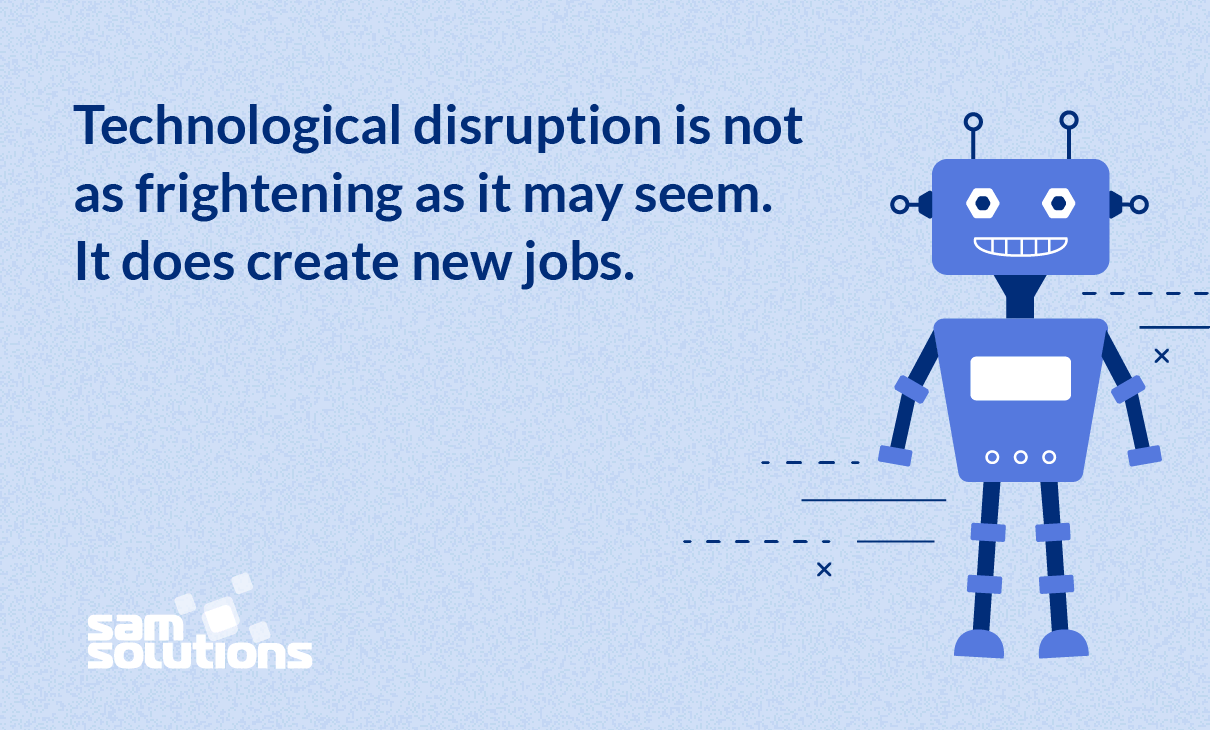
People will not lose their workplaces irrevocably. There will be new jobs, the so-called adjacencies, meaning that people will be cooperating with technologies. The primary difference is that for humans, the work will become more creative, rather than technical. They will create business strategies, design and develop new concepts of implementing smart machines in real life, control and analyze the results.
In the future, there may appear job positions such as robotics managers or AI teachers.
To make this possible, people will have to adapt to the changing reality, upgrading their skills and gaining additional knowledge.
What Can Be Done for Successful Transformation
To drive job creation during the adoption of ubiquitous AI and robotics in the future, companies should start investing in training and education of current employees. Society should also change its attitude toward artificial intelligence for robotics: AI should be seen not for its disadvantages, but with the thought of added market value.
Creativity and the ability to learn will be crucial for personal success in the robotics-based world.
Working processes and employment for people will shift from routine repetitive tasks to creativity. The critical skill that the worker of the future will require will be the ability to learn and to be open to innovations.
Leverage our 30+ years of embedded and firmware development experience
2. AI and Robotics Impact on Industries
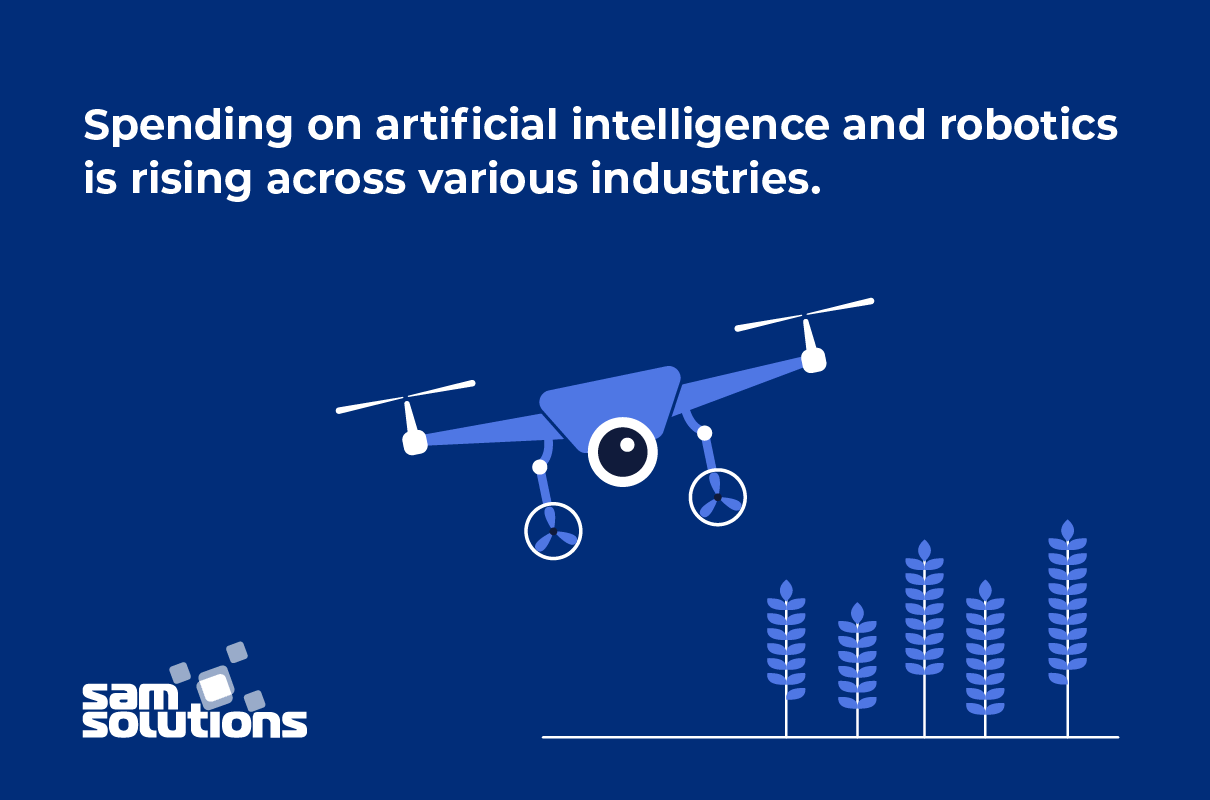
Spending on artificial intelligence and robotics is rising across various industries.
Manufacturing
The first simple robots stepped onto the factory floor approximately half a century ago. Today, one can hardly imagine a manufacturing business without automatic lines, steel robotic arms and CNC industrial machines. Robots in the manufacturing industry have become the new normal, and they are making significant strides in improving various production processes.
The industrial robotics market will exceed the $33 billion mark by 2025.
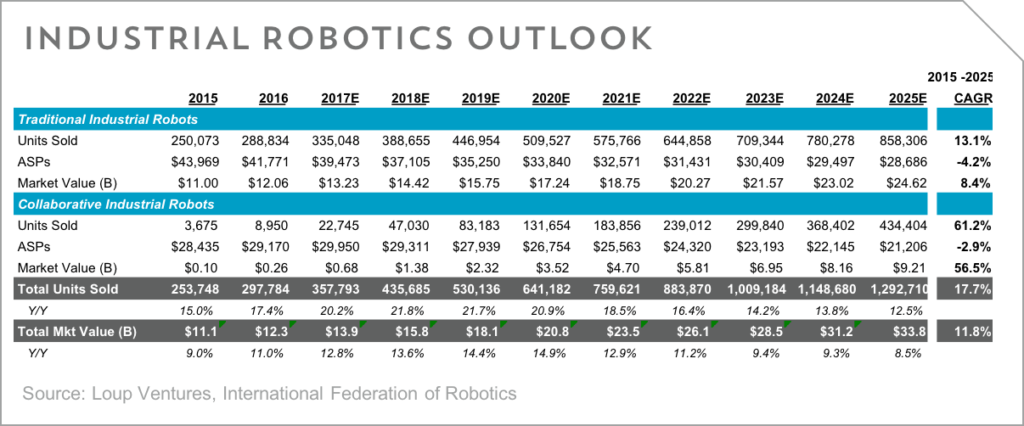
Current trends for robotics in manufacturing include hardware integration with smart technologies such as IoT solutions, artificial intelligence and machine learning algorithms, Big Data and cloud computing. Thus, smart manufacturing is evolving. Such robotic systems are not only able to carry out basic repetitive operations such as loading, assembling, or modifying parts. They can also perform cognitive tasks, making instant decisions and improving processes without human intervention.
Benefits of using robots and AI in manufacturing
- Optimized Productivity. Robotic equipment can be programmed to operate at a constant optimal speed without pause. As a result, automated machines produce more and within a shorter time than do human workers. The remote management facilitates quick settings or fixing of issues. Moreover, the automated equipment is highly customizable and can flexibly switch between tasks, improving production efficiencies.
- Improved Quality. Intelligent machines eliminate human error and can provide almost 100 percent accuracy, thus improving the quality of the output. This in turn enhances customer satisfaction, as defective products are not likely to reach end users.
- Reduced Costs. As soon as one robot can replace dozens of workers, factory owners save on employee wages. The upfront costs are offset by a quick ROI that can be achieved within two years. This is possible due to increased productivity and a higher speed of throughput. Robots can work in lights-out conditions and don’t require climate control, which saves on utilities.
- Safety. Numerous manufacturing jobs involve higher physical risks and work in hazardous conditions. Smart machines replace people in hazardous environments, minimizing workplace injuries and the detrimental effect on workers’ health. High-risk industries such as mining or fertilizer production turn to robots to avoid adverse events, ensuring the safety of their workers.
The digital transformation of the manufacturing industry is a kind of industrial revolution, and like any revolution, it comes with both pros and cons. Some of the disadvantages of robotization are:
- high initial expenses
- the necessity to reshape the labor market
- an additional burden on the educational system and social organizations
- changes to the corporate culture at all stages.
It goes without saying that manufacturers should nevertheless embrace robotics and automation to remain competitive.
Healthcare
Modern technologies, including robots and AI, contribute to the development of digital health and significantly improve medical care.
Robotic machines have become irreplaceable surgeons’ assistants. They enable minimal invasiveness and improved accuracy during operations, which reduces recovery time for patients.
AI-based chatbots and consulting applications facilitate the branch of telemedicine. Other intelligent programs can perform precise diagnostics by analyzing patients’ medical records and other data, e.g. from medical wearables.
The potential of intelligent software and machines in healthcare is enormous because of their ability to make medical services more accurate and available.
Agriculture
This might be surprising, but agriculture is among those industries being greatly impacted by the use of robots and artificial intelligence.
Agricultural robots handle various tasks such as harvesting or spraying crops from weeds or pests more effectively than human workers. These are machines and drones with computer vision, machine learning models, or AI algorithms that monitor crop and soil conditions, analyze the influence of weather and other environmental conditions on plants and predict consequences.
Since the population on our planet is growing, quite soon it’ll be a challenge to produce more food. The automation of the agricultural industry seems to be the best way to cope with this challenge.
3. AI and Robotics Impact on Private Lives
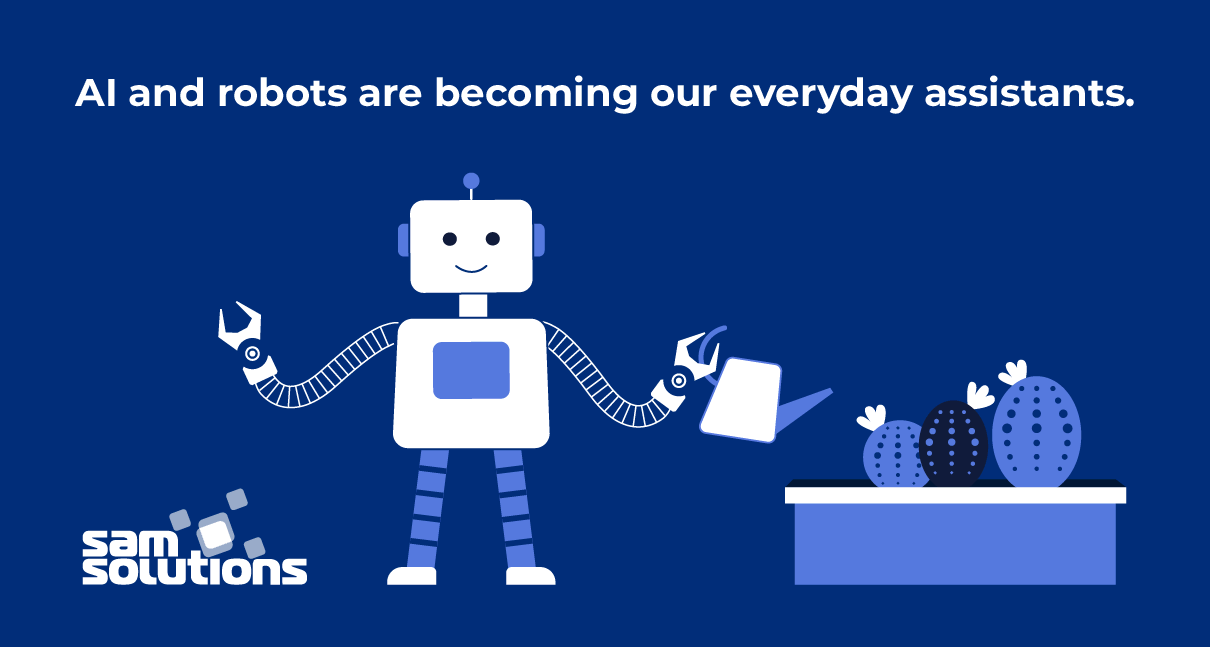
Robots and intelligent programs are becoming our everyday assistants. According to Gartner, 25 percent of customer services and support will be managed by AI technologies, particularly chatbots, in 2020. In comparison, in 2017, chatbots accounted for less than 2 percent of online customer interactions.
This trend concerns not only businesses but also day-to-day personal tasks. Currently, people are using numerous home appliances that perform their chores, such as robot vacuum cleaners or intelligent coffee machines. Personal assistants, such as Siri and Alexa, help with searching for information, making orders and controlling devices in smart homes. The development of such assistants will obviously not stop, as consumer demand is growing.
In the coming years, cognitive technologies will be widely used to look after our health and well-being. For instance, we may see more robots that will assist people with disabilities and illnesses or companionship robots such as Rudy that will provide care and protection for the elderly.
AI and Robots — This Is About Life
We are witnessing very exciting changes and innovations in the world of technology penetrating every industry and every social sphere. In the short run, we may underestimate the consequences (both positive and negative) of the disruption, but the truth is that we should start preparing for them now.
The main task of governments and top management of companies is to create a working environment that will enable everyone to benefit from these shifts. They should provide education and skills training for human workers, support research activities and invest in innovations.
We engineer industry-leading IoT and embedded solutions for SMBs and enterprises
SaM Solutions has been providing IT consulting and custom development services in the international arena for 30 years. Our expertise includes embedded software development for industrial, experimental and scientific equipment and the implementation of AI techniques. One of our projects involved building a predictive maintenance system for a motor on a Toradex board.
Contact us to learn more about the services we provide and to discuss your requirements.



















 The Latest 15 Information Technology Trends in 2024
The Latest 15 Information Technology Trends in 2024 Top 10 Embedded Software Development Tools
Top 10 Embedded Software Development Tools IaaS vs. PaaS vs. SaaS: What’s the Difference?
IaaS vs. PaaS vs. SaaS: What’s the Difference? 10 Examples of Predictive Analytics
10 Examples of Predictive Analytics




![Digital Transformation Strategy [+ Key Trends in 2024]](https://www.sam-solutions.com/blog/wp-content/uploads/2020/07/main-Digital-Transformation-Strategy-min.png)




